SST Annual Report for 2024
With this first blog of 2025, the SST Goldsmiths team reflects on the achievements and challenges of the past year. Research-wise, we find ourselves in a strong position, having accomplished many objectives and successfully completed numerous tasks. This progress is largely thanks to the enthusiasm and hard work of our global team of researchers and collaborators. As we enter the final year of the project, our focus will shift to curating the main project output, specifically the planned Mobile Music Machine book series.
We got off to great start last year with SSO#10 Frames and Frequencies, film festival presentation, at the 8th Global Reggae Conference, UWI, Kingston, Jamaica on 15th February 2024, blog. The short research documentaries we have commissioned from the sound systems themselves over the course of the project continue as both a valid research output and a great way to sharing the work of the project to practitioners and researcher alike. The films will be available on our YouTube channel before the end of the project in December this year. In the meantime. there have been several screenings, including Dub Camp festival in France, Florence, Italy, and Huddersfield, blog.
The Global Reggae Conference in Jamaica also provided the occasion for a SST Team Global Gathering, blog. This was a rare chance for team members from around the world to come together in person and discuss common issues and ideas; sixteen of us in the room and another six online. Since then, a Portuguese speaking SST sub-group has been meeting and also Spanish-speaking team members are in touch. Moreover, the conference marked a milestone in cross-cultural exchange with the presence of Natty Nayfson, Brazilian radiola pioneer. Returning to Jamaica after many years, he was in conversation with the SST Brazil team as the highlight of a radiola-themed panel.
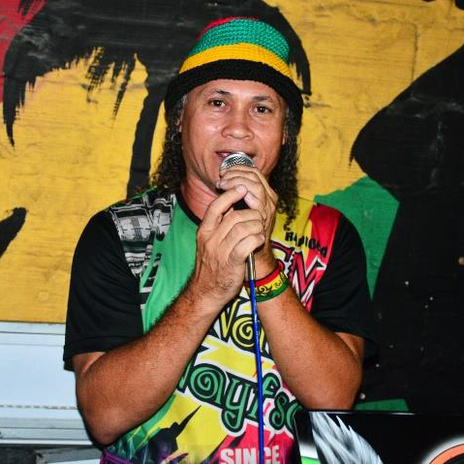
DJ Natty Nayfson
Overall, 2024 has been a good year both for the SST research and sonic street technologies cultures globally. Not only in terms of the technology finding new admirers and builders amongst women, LGBTQ+ and young people, blog. In the UK, institutional recognition and resourcing for the street culture has come in the ground-breaking British Library exhibition, Beyond the Bassline: 500 of Black British Music, blog. Meanwhile, on the sound system scene itself there have been substantial technological advances, such as the growing popularity of Paraflex speaker box designs, blog.
In the rest of the world, one notable achievement has been sonidera culture’s recognition as Cultural Heritage in Mexico City. Formally granted in October 2023, the declaration has resonated widely, generating significant expectations and inspiring sound system practitioners worldwide over the past year. More broadly, both mainstream and scholarly attention for sonic street technologies cultures has been steadily increasing. The trend is well exemplified by Boiler Room’s coverage of sound system dances in South Africa and aparelhagem sessions in Brazil. However, both institutional and mainstream attention are, inevitably, a double-edged sword, and their impact on these cultures will be crucial to monitor in the future.
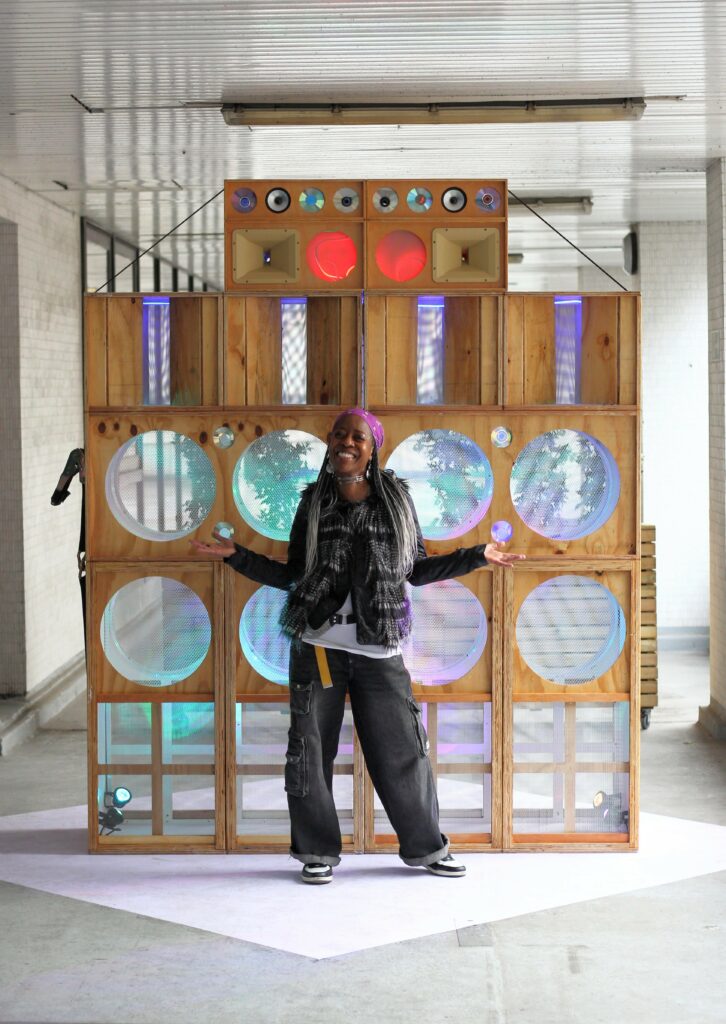
Bass Tone Regeneration with Linett Kamala, Earth Night, 7th November 2024, © 2024 LIN KAM ART
On a much less happy note, we are losing our elders. The last few years have seen the passing of several of the pioneers of the UK sound system scene. The legend Jah Shaka transitioned in 2023, blog; last year we lost important figures such as London-based Jah Youth, Ras Muffet in Bristol, who performed in London as part of SSO#2, July 2016 and more recently, Fat Man. In Jamaica, Jimmy Solo in January 2024 and very recently King Edwards. This makes all the more urgent the work of documenting the journeys and the knowledge of the founding figures of the culture before it’s too late. It’s the same demographic and same story with different sonic street technologies cultures in Mexico, Columbia, Brazil and around the world. We must cherish our elders. It only takes a smart phone to record a conversation – before it’s too late.
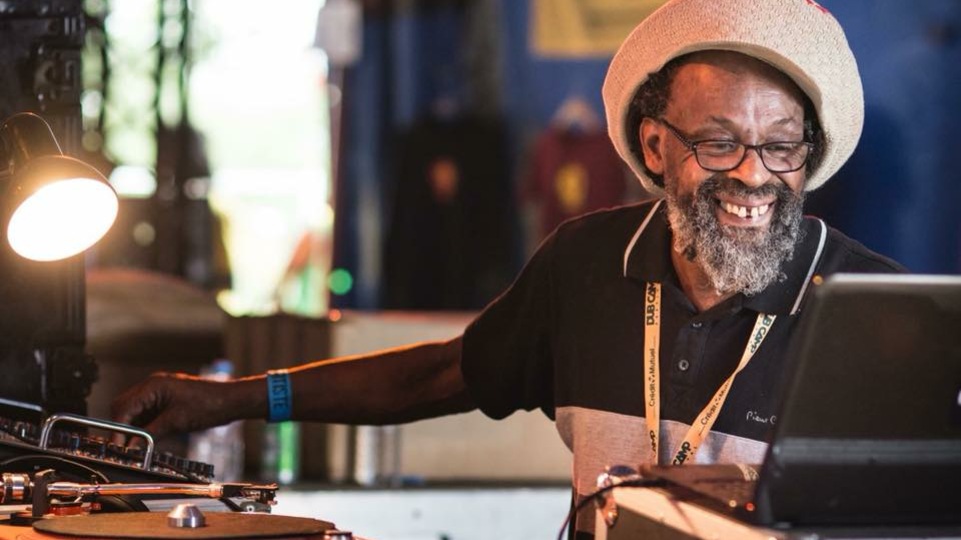
The late Ras Muffet (Source: Web)
Book series: Mobile Music Machines
In 2023 we established a provisional list of the variety of sound systems worldwide, blog. Throughout 2024 we have been thinking in term of our research outputs, one of the most important of these is the publication of our research findings. This will take the form of a book series of edited volumes entitled Mobile Music Machines. Each volume will bring together case study chapters authored by our SST team members from around the world. It should not go without saying how much we appreciate their continuing energy and enthusiasm for the project. Every Zoom meeting leaves us even more inspired for the ambitions of the project.
The title Mobile Music Machines represents a further refining of the key concept of ‘sonic street technologies’. This might deserve some brief clarification. As for the first word, throughout the research we have documented how a multifaced mobility across geographies, ethnicities and classes is currently even more central to these cultural formations than their street, subaltern origin—especially when the latter becomes a selling point in Global North markets. On the other hand, the emphasis on ‘music’ rather than sound aims to reflect practitioners and fans’ own understanding of their culture; invariably, it is the music—properly selected, equalized and amplified—that motivates them. Finally, the choice for ‘machines’ rather than the broader term ‘technologies’ aims to emphasize the interconnectedness and interaction of the various components—technologies, human bodies, social structures, ecologies and economies—which enable these cultural formations to flourish across the globe.
Establishing the Research Area
So, the year’s research work progress can best be organised in terms of the scope of the volumes planned for the Mobile Music Machines series. We have been envisioning volume 1 as a “sampler” for the series, that is, to illustrate both the geographical scope of the project and the variety of different types of sound systems involved. The volume will thus include chapters from Europe, Mexico, Jamaica, Colombia, Brazil, Canada and Australia, providing a broad overview of the different local adaptations and repurposing of the commercial gramophone and its direct and indirect descendants.
The most important task of this first volume is to establish sonic street technologies as a valid new research area. Of course, this can only be done based on the research findings and their framing in terms of the principles of the SST project. As from the start, this remains: the intra-relations and intra-actions between street technology and popular culture.i It is this focus that distinguishes our approach from most of the popular music research to date which has tended to concentrate on genres, artists or identities, which will be reflected in the first volume. We are incredibly pleased that it will be published by Bloomsbury Academic. As invariably the case with research projects, the publication of further volumes will go on long after the end of the funding. While the series is still in the planning stages, we are pleased to share some of the provisional features of each volume.
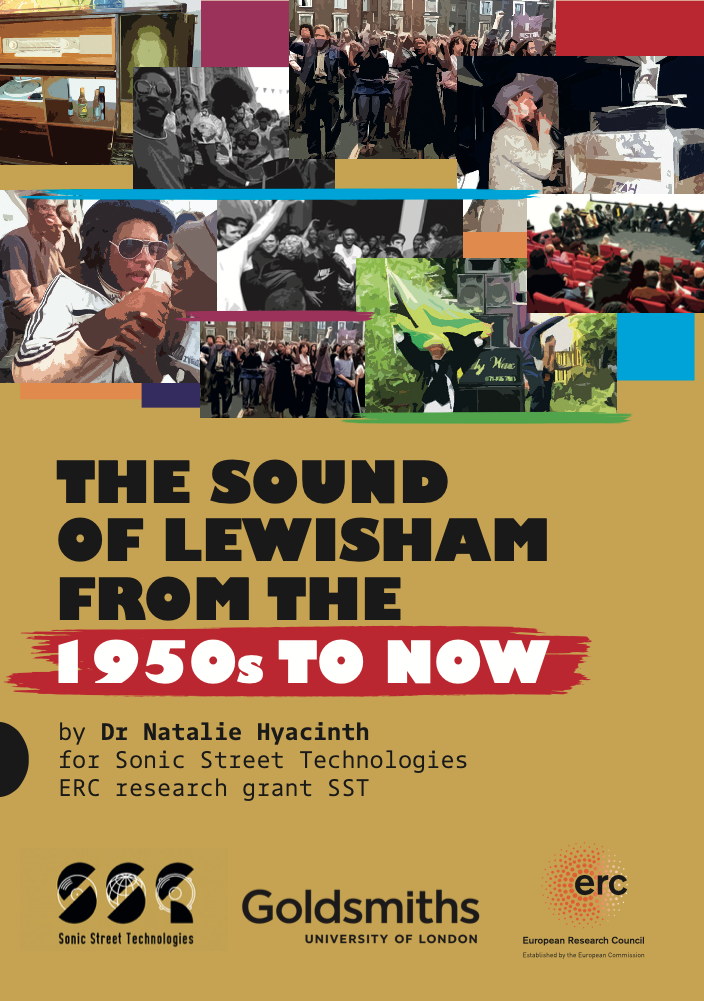
Local Research: Sounds of Lewisham pamphlet, cover, based on research of Lewisham case study chapter by Dr Natalie Hyacinth
The Reggae Sound System Diaspora
The Jamaican-born apparatus is undoubtedly the music machine that has spread most widely across the planet, so volume 2 will have again a global scope. One important reason for this is that the technology of the set of equipment has come to be heard as the instrument for playing reggae and dub music, whose popularity has in turn fuelled that of the sound system worldwide.ii Volume 2 will be devoted to this diaspora, beginning with the source. One chapter will be contributed by Jamaican scholars Dr Sonjah Stanley-Niaah and Dr Dennis Howard from the Institute of Caribbean Studies and the Reggae Studies Unit at the University of the West Indies, Mona.
In Canada, Professor Mark Campbell, University of Toronto has been leading his team at the Afrosonics Lab, including Betel Tesfamariam and Kavone Manning archiving the Canadian sound system scene present day and historic, blog. Long under-recognised, Canadian reggae culture has recently received attention with the National Film Board of Canada’s Sounds and Pressure: Reggae in a Foreign Land, a five-part documentary series directed by Graeme Mathieson and Chris Flanagan, trailer.
The UK, besides Canada has been a country of Jamaican emigration, naturally carrying the culture with it. One historic example that will be included in the book is the sound system scene in 1970s and 80s Huddersfield, with a case study by Gopal Dutta and Mandeep Samra, blog, as well as a sonic exploration of the Lewisham borough in South London undertaken by SST team member Dr Nathalie Hyacinth.
Australia is an example of country where reggae and other sound systems have founded scenes outside the Jamaican diaspora itself, thus becoming what we are calling an electromagnetic diaspora. The SST Australia team is led by Dr Clare Cooper, blog and Professor Doug Khan with post-doc researchers Moses Iten, blog and Andrew Belletty, blog, abd researcher Brent Clough.
India is another country in which sound system culture has found a new home comparatively recently with sounds such as 10,000 Lions, Monkey and BFR, each of which have delivered beautiful short films providing the project with an in-depth immersion into practitioner’s own understanding of what they do. SST team member Aadita Chaudhury is covering the Indian scene for volume 2.
France is currently one of the world’s biggest markets for reggae and sound systems, as proved by its bubbling festival scene, including the massive Dub Camp, blog. This interest stems not only from the country’s Caribbean and African population, but also from its proximity to the UK, the undisputed hub for sound system technology on this side of the Atlantic Ocean. The evolution of the local scene has been researched by Dr Jean-Christophe Sevin of the University of Avignon, blog.
Latin American Technologies
The next two volumes in the planning are geographically themed, the third one covering the Spanish-speaking scene in Mexico and Colombia, as well as their diaspora in the United States, where sonic street technologies are a vital part of the musical street culture. The important point to note here is that sonidos in Mexico and picós in Colombia have evolved independently of any Jamaican contact or influence. This shows how similar social and environmental conditions invent similar apparatuses for popular entertainment and respite from available technologies.
Collaborators for this volume include Dr Cesar Rebolledo’s who is researching the way sound technologies shape imagined sonic geographies within the sonidera scene in Mexico City, as well as its diasporic ramifications. Cesar has also documented the recent recognition of sonidera culture as Cultural Heritage in Mexico City. With a team including researcher Linette Rivera, SST Mexico have also organized public talks with practitioners from both the sound system and the sonidera scene, blog.
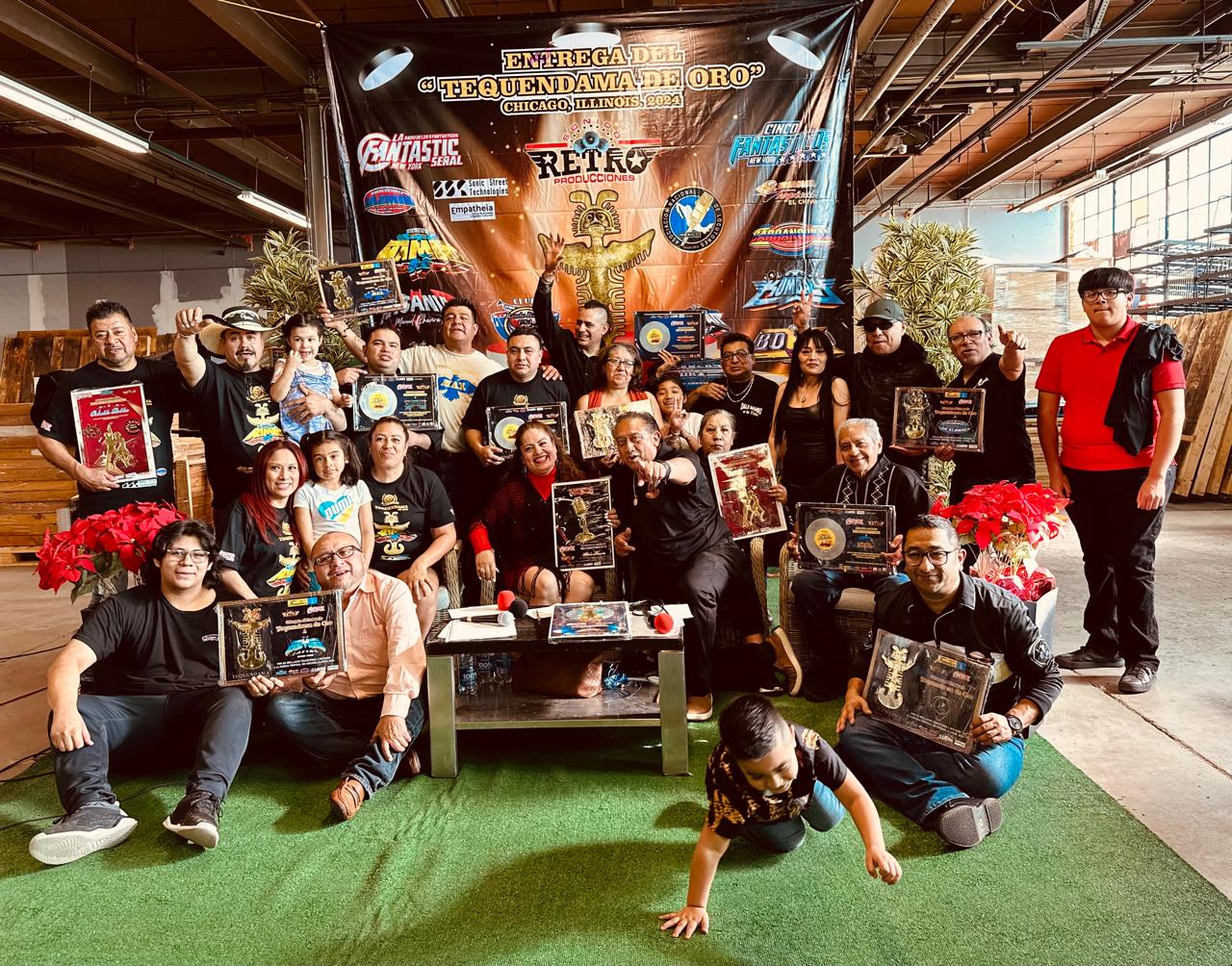
Chicago Sonidero Prize Giving © César Rebolledo
The SST USA research, led by Prof Josh Kun with post-docs Paulina Lanz and Fernanda Soria Cruz at the University of Southern California, is focused on the LA Mexican diaspora from a gendered perspective. A highlight of their fieldwork so far has been inviting Mexican female collective Musas Sonideras to perform in Los Angeles. With a Dublab radio show and street dance, Musas Sonideras made their first appearance for the Californian Mexican diaspora.
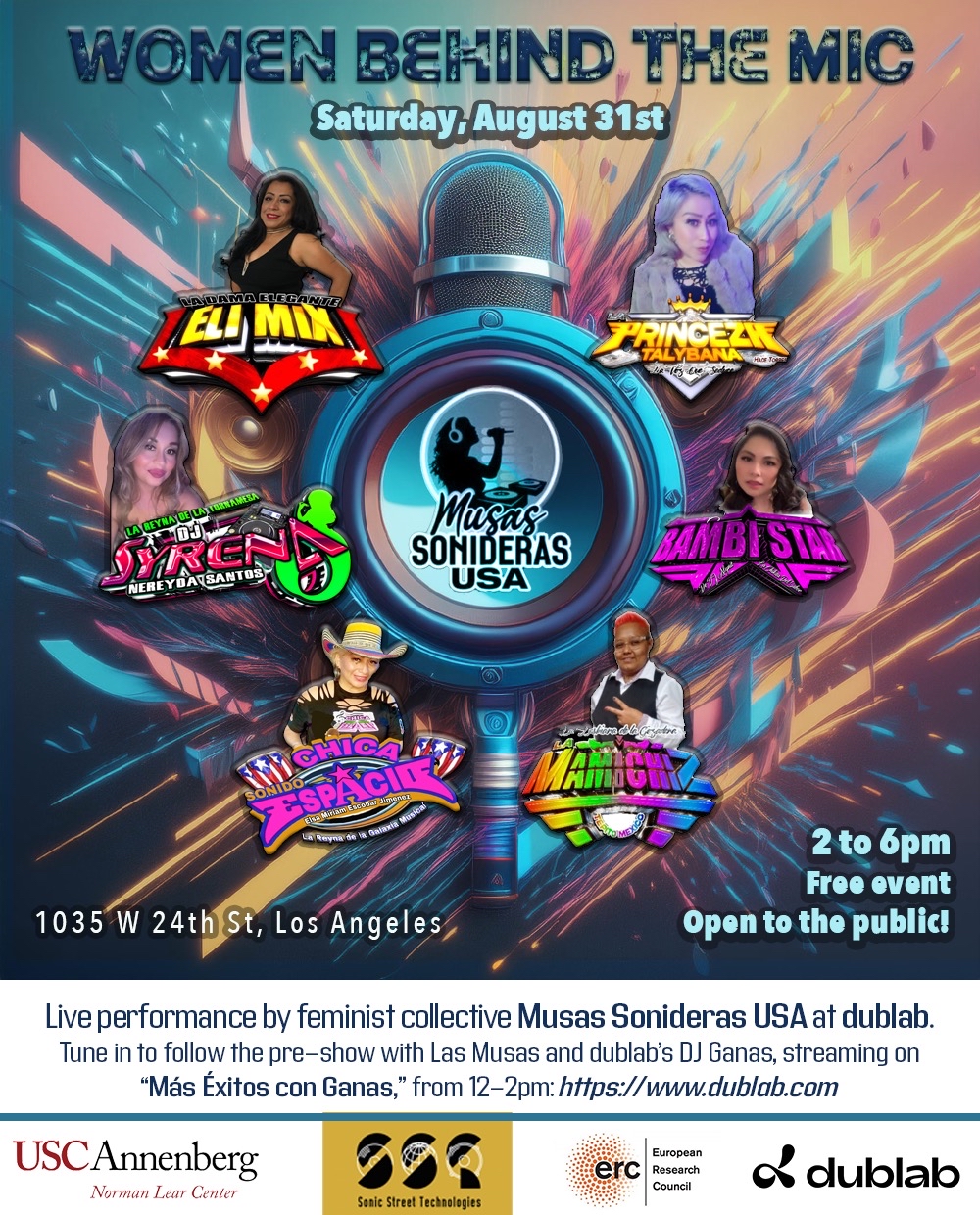
Women Behind the Mic: Musas Sonideras USA
As our readers will know, Colombia’s Caribbean region is home to the picó. The strong visual identity is one of the most striking features of this unique sonic street technology, blog 1 and blog 2. Nonetheless, a reggae sound system scene has also been rapidly growing in the country over the last decade, with El Gran Latido as a notable example, see trailer.
The Colombia leg of the research has therefore explored newer as well as more established scenes. One example of the latter is Cartagena, where researcher Jorge Giraldo Barbosa is focusing on the technological capital of local picós. Quite surprisingly, Bogotà has only recently started to develop its own SST scene, including both sound systems and picós. Here, independent researcher and DJ Edgar Benitez’s is mapping the impact of these two sonic street technologies cultures in a new urban environment.
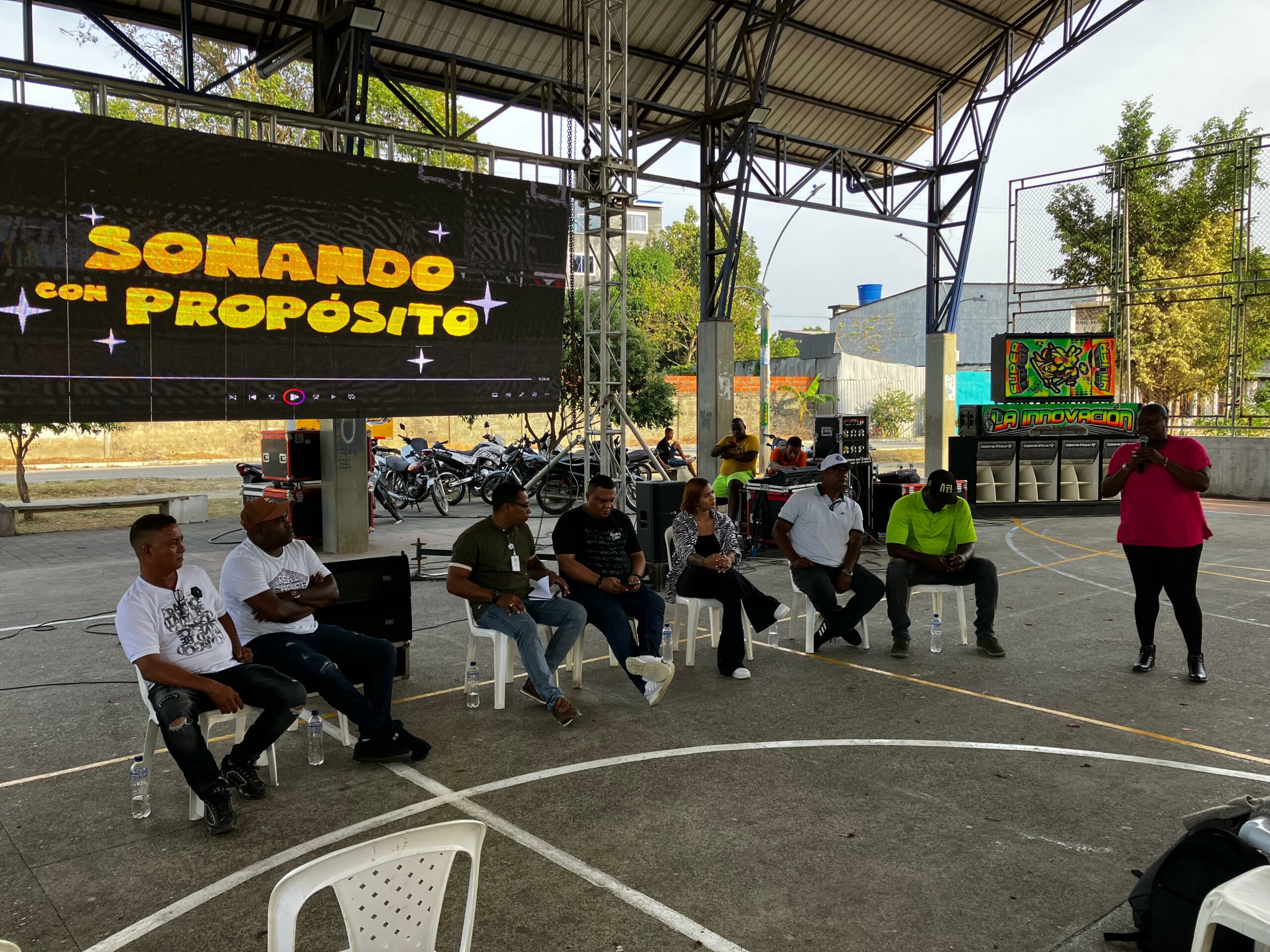
Screening of SST research film ‘Sonando con Proposito’ and roundtable discussion in Turbo, Colombia,March 2024 © Brian D’Aquino
The main output of the Colombia research so far has been the ongoing collaborative research with the Urabá Sound System collective in Turbo. The resulting 35-minute research documentary, screened in five Colombian cities between February and March 2024, has succeeded in supporting USSC’s ambition to have local picotera culture recognized a peace-building tool in Urabá and is part of an ingoing Impact case study, as detailed in blog 1, blog 2, blog 3.
Brazilian Scenes
Brazil boasts the greatest variety of sonic street technologies cultures of any country. This should not be a surprise given that Brazil is itself a continent with distinct and sometime isolated cultures. Our research has identified no less than five different types of Brazilian sonic street technologies, each of which will have chapter case studies making up the content planned for Mobile Music Machines volume 4.
The radiola of São Luís in the Northern state of Maranhão is where our research started in Brazil, led by Dr Marcus Ramusyo de Almeida Brasil at IFMA, blog and Dr Leo Vidigal at UFMG. The radiola is the only uniquely Brazilian type of sound system with Jamaican influence, playing reggae. Leo and Marcus will be co-editing the Brazil volume with the SST team. In addition to that they have won their own additional funding for a comparative study of reggae sound systems in Bristol and São Luís. Congratulations.
The aparelhagem is a unique type of sound system playing tecnobrega music flourishing in the Amazonian state of Pará, capital Belém. The SST team Natalia Figueredo and Maria Luiza de Barros are leading on this research with a particular focus on technological aspects and social implications, beginning with a survey of the existing sources, blog.

Aparelhagem Crocodilo, Pará
The Brazil research will be continuing in 2025 with case study chapters on som do pickup (car mounted systems) from Roberto Gonzaga and Professor Gisela Castro (ESPM, São Paulo). These customised cars are a type of sonic street technology also found in Colombia, Dominican Republic, Jamaica and many other places. The reggae sound systems of São Paulo will be mapped by Daniella Pimenta (Feminine Hi Fi). Finally, to add, Dr Bruno Muniz will be covering current Rio de Janeiro’s baile funk scene. We would like to acknowledge the help and support on the management of the Brazilian work from Edu Ferreira of Peoples Palace Projects, Brazil.
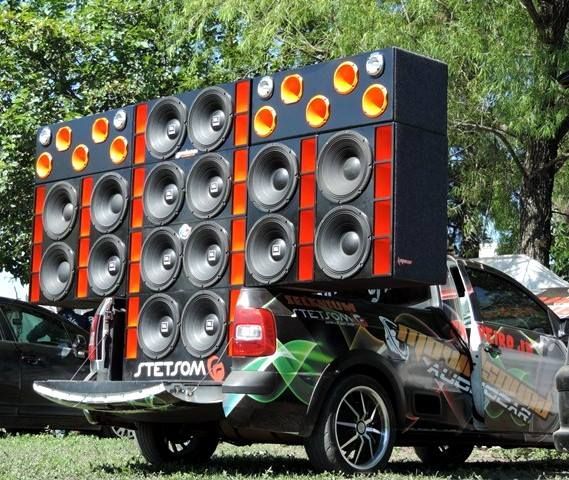
A som do pickup, Brazil
Mapping and Connecting
The project has also achieved further progress on ongoing tasks, such as scoping out the existing research on the different sonic street technologies scenes and making it available in a systematized way to fellow researchers. This is fundamental for establishing sonic street technologies as valid research field. Painstakingly compiled by our local researchers, annotated bibliographies on Brazilian aparelhagens and Canadian sound systems (blog) are now available on the SST website.
The sonic map reached a significant milestone by the end of 2023, with over one thousand completed submissions. This has been one of the most challenging aspects across all the regions the project has operated, as extensively discussed with our global team. Nevertheless, the mapping process has proven extremely rewarding in research terms, enabling the comparison of different scenes to include not only raw data about technology and crew demographics but also an insight into the cultural mechanisms governing each scene, particularly in terms of how specialist knowledge is shared with outsiders. This has been pivotal in evaluating the evolving relationship between academic research and street culture and in developing strategies to ensure that a non-extractive approach remains a fundamental research principle of the SST project.
Back at Goldsmiths in May the team enjoyed a joint seminar on Thinking Through Practice with our fellow ERC project with PI Prof Kat Jungnickel and her team. While her topic of the Politics of Patents (PoP) of women’s garments is rather different we had a great discussion on common themes of making (sewing and audio engineering) and knowing. Another highlight of the year has been the fantastic workshop Embodied Methodologies organised by newly established EM Collective, including members from Goldsmiths, University of Aberdeen and UWI Mona. The workshop’s focus on alternative knowledge systems and Global South epistemologies was absolutely relevant for our own research, as demonstrated by the participation of several members of our international team. A recording of the proceedings is available online.
Last but not least, the Goldsmiths SST team welcomed Kelly Bradley our new Research Manager to the team, following Yael Gerson’s very much appreciated contribution in that role. There’s a lot to look forward to in our final year of 2025, not least the SST End of Project Gathering to take place in person at Goldsmiths in November. Stay tuned!
